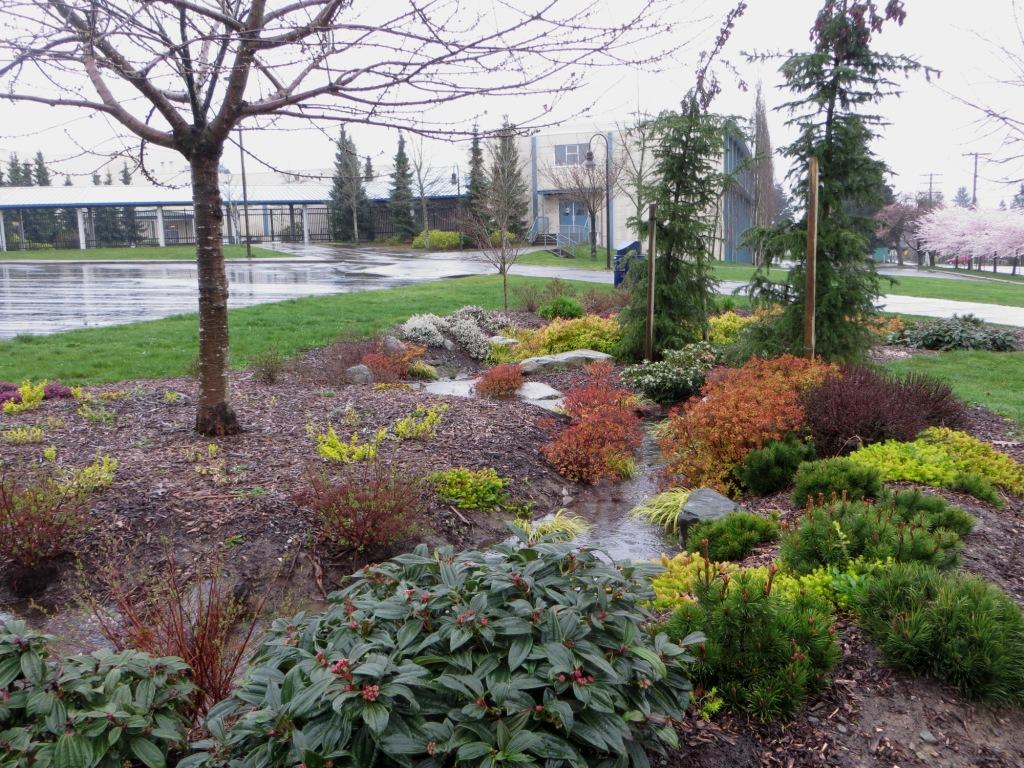
“Soil can hold more water than all the rivers in the world”
– Hans Schreier, Professor Emeritus of Watershed Management, UBC.
Too little water, then too much — 2021 was a year of weather woes for British Columbians. Counter-intuitive as it may seem, both drought and flood were exacerbated by one-and-the-same problem: large expanses of land whose ability to soak up rainwater has been severely damaged.
Whether created by urban development, rural wildfire, overgrazing or clearcut logging, landscapes that shed rainwater rather than soak it up worsen the impacts of extreme weather events associated with climate change. Heavy rains produce torrential surface runoff that increases the risk of landslides, creek and storm-sewer overflows and flooding. Water that should have soaked down into nature’s free reservoir, the ground, instead quickly flows out to the ocean, thereby increasing the likelihood of groundwater depletion and drought during dry spells.
Nature Trust Rain Garden Fund
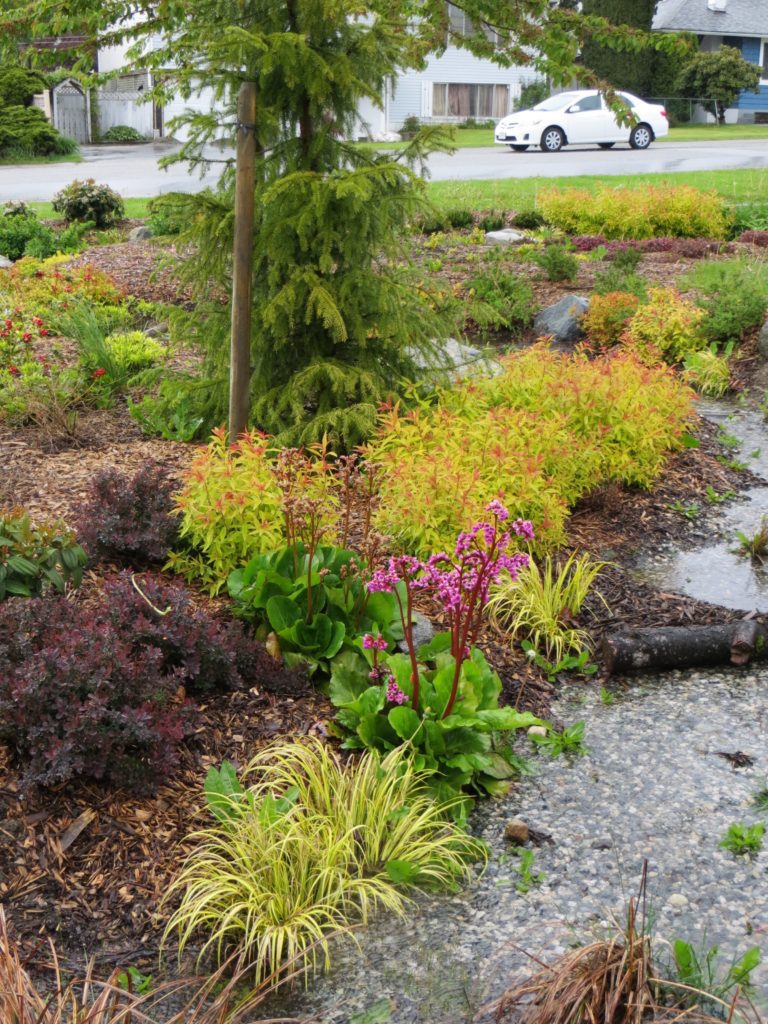 With these issues in mind, the Nature Trust of BC established its Rain Garden Fund in 2007 with the goal of providing small grants for demonstration rainwater infiltration projects. Over a dozen such projects – from Yarrow to North Vancouver and Victoria to Parksville – have given community groups hands-on experience with a simple technique for increasing climate resilience by restoring rainwater infiltration.
With these issues in mind, the Nature Trust of BC established its Rain Garden Fund in 2007 with the goal of providing small grants for demonstration rainwater infiltration projects. Over a dozen such projects – from Yarrow to North Vancouver and Victoria to Parksville – have given community groups hands-on experience with a simple technique for increasing climate resilience by restoring rainwater infiltration.
How have these projects fared, especially through the weather extremes of 2021? We paid a visit to one of them to have a look!
North Delta Secondary School (NDSS) Rain Garden

In January 2013, the NDSS Energy Ambassadors environment club received a Nature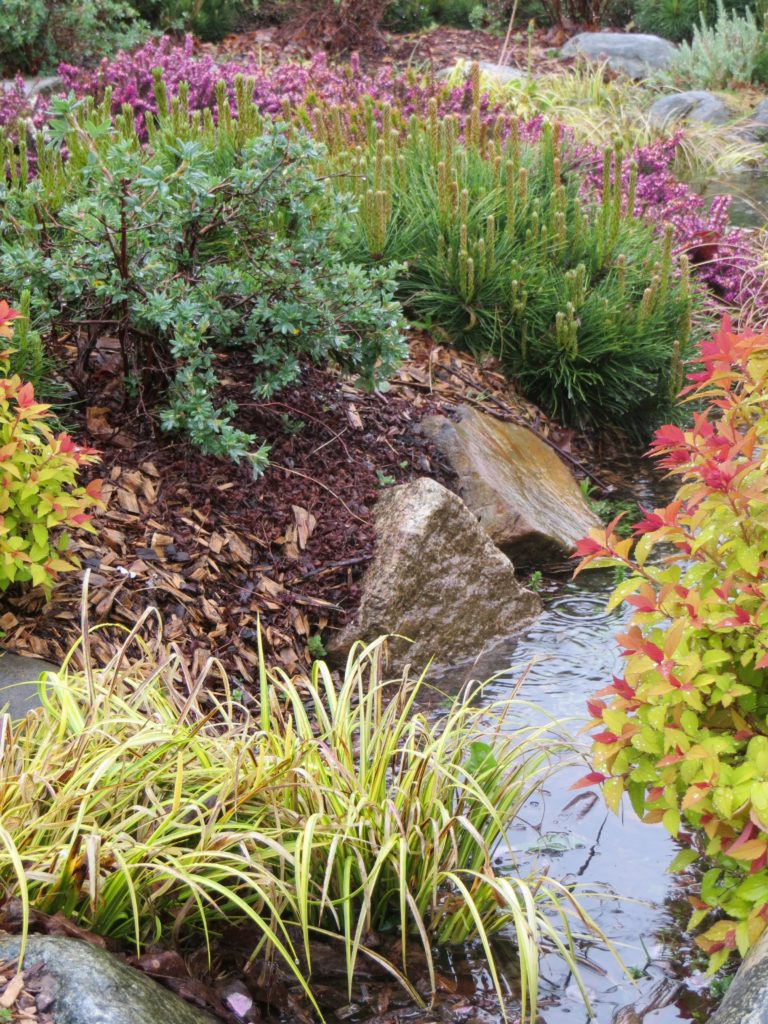 Trust grant of $2000 to create a rain garden at their school. With help from the Delta School District and local Streamkeepers, enthusiastic students transformed an unused expanse of lawn into a meandering imitation streambed, generously planted with trees, shrubs, perennials and groundcovers that now host birds and pollinator insects.
Trust grant of $2000 to create a rain garden at their school. With help from the Delta School District and local Streamkeepers, enthusiastic students transformed an unused expanse of lawn into a meandering imitation streambed, generously planted with trees, shrubs, perennials and groundcovers that now host birds and pollinator insects.
The garden receives about 1.8 million litres of stormwater runoff per year from the adjacent parking lot. A pre-existing storm drain at a low spot in the former lawn (installed long ago to pipe away “nuisance” water that might interfere with mowing) became the rain garden’s emergency overflow drain.

It works!
From day one, when School District staff diverted parking lot runoff into the newly-planted garden, light-to-moderate runoff was fully absorbed. During heavier or extended rains, runoff initially poured into the garden faster than it could be soaked up, with the result that much excess water went down the emergency drain that empties into a nearby salmon stream called McAdam Creek.
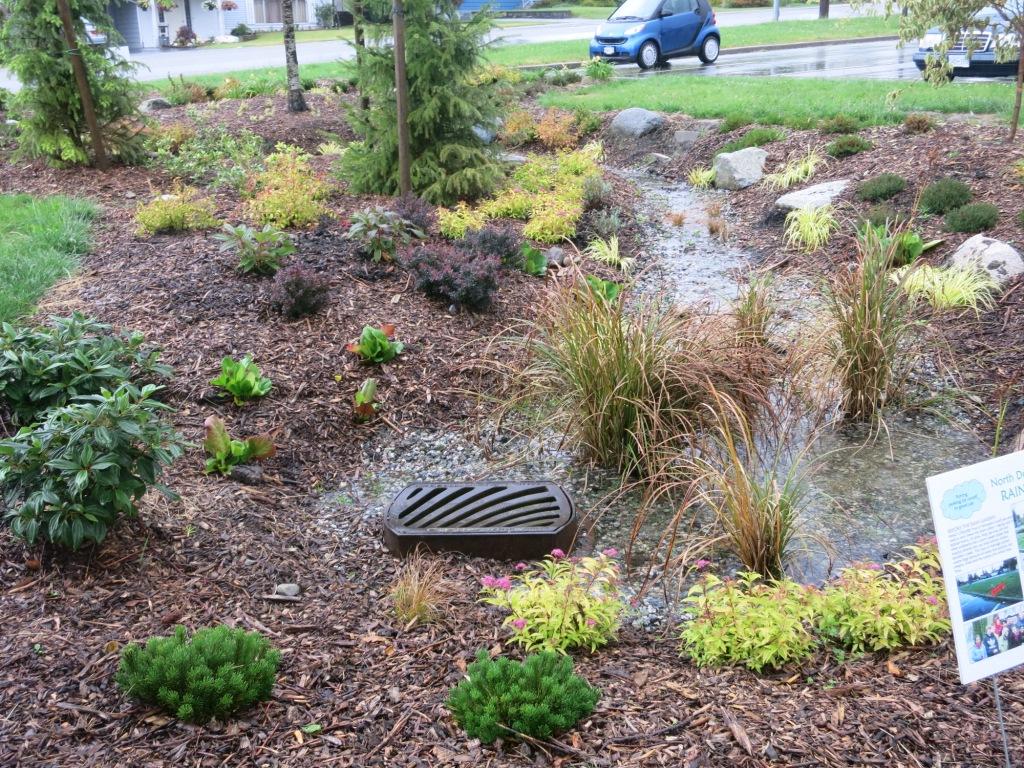
But as the NDSS Rain Garden has matured, it has performed increasingly well. Expanding root systems and an established ecosystem of soil organisms continuously open new pores in the soil, resulting in faster and larger infiltration capacity. The garden is never irrigated, but survives dry spells with whatever rainfall and parking lot runoff it stores in its soils during rain events.
And those weather extremes?
The current Rain Garden Caretaker (a former NDSS student) didn’t think to take photos during 2021’s heat dome, nor during the atmospheric rivers. Why not? Well, it was just business as usual for the now 9-year-old garden, which survived weather extremes with flying colours! There are no significant plant die-offs (only a small number of heathers), no signs of bank failure or erosion – and on the plus side, the garden trapped record amounts of parking lot “gunk” (tire dust, brake dust, sand, litter, cigarette butts) that would once have washed down a storm drain and into salmon habitat.
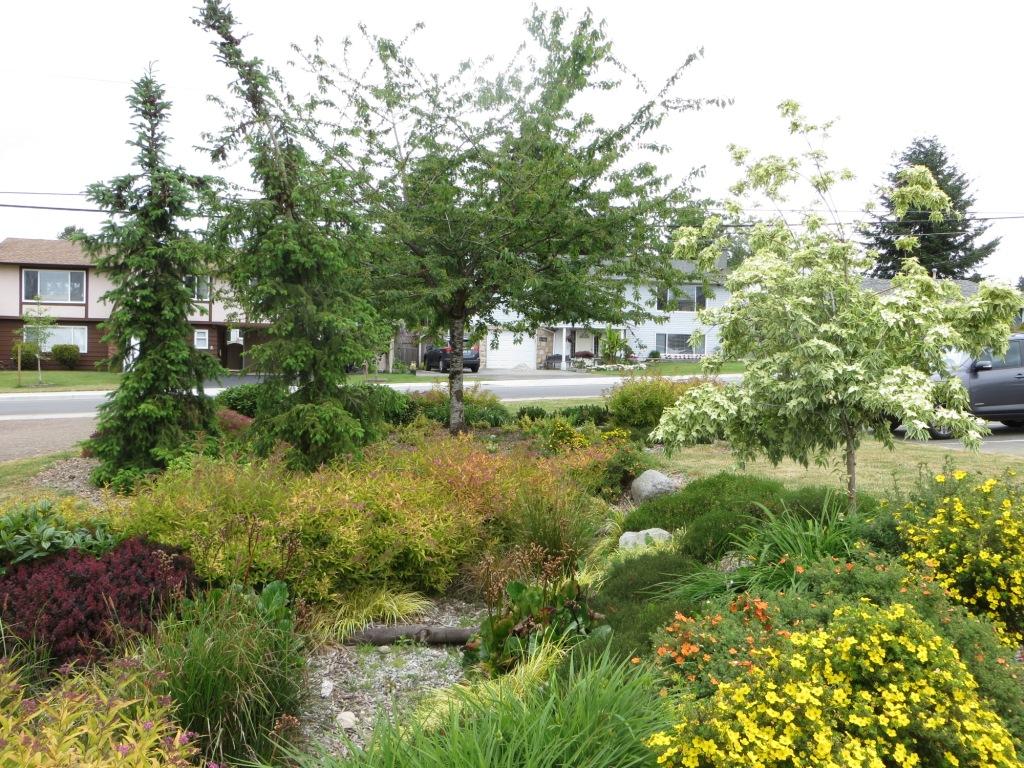
Stay tuned for news of the most recent Nature Trust-funded rain gardens at Mountainside School in North Vancouver!
